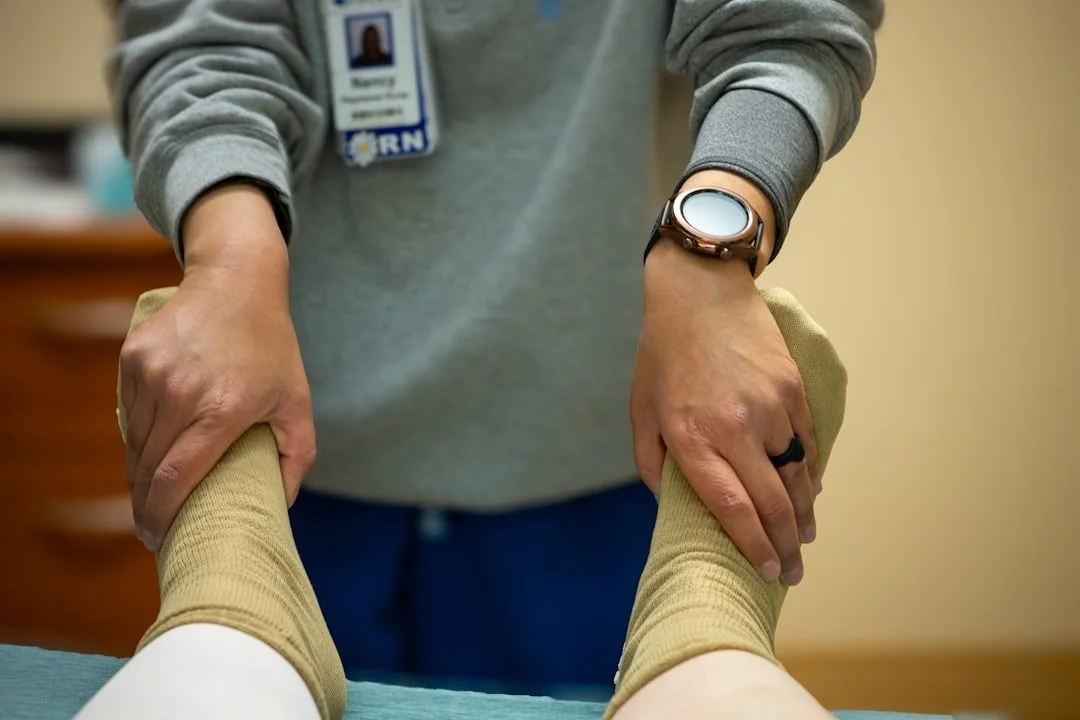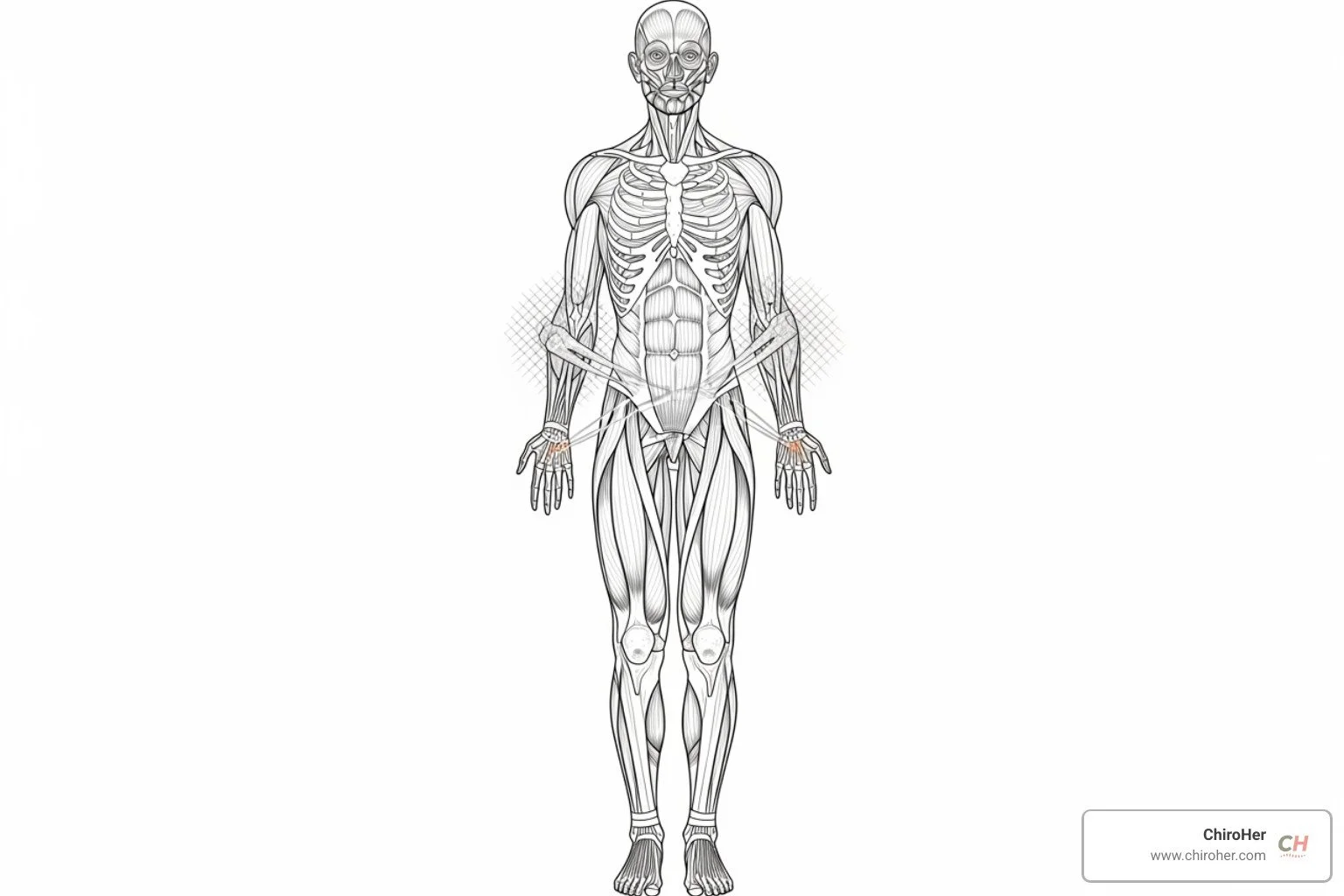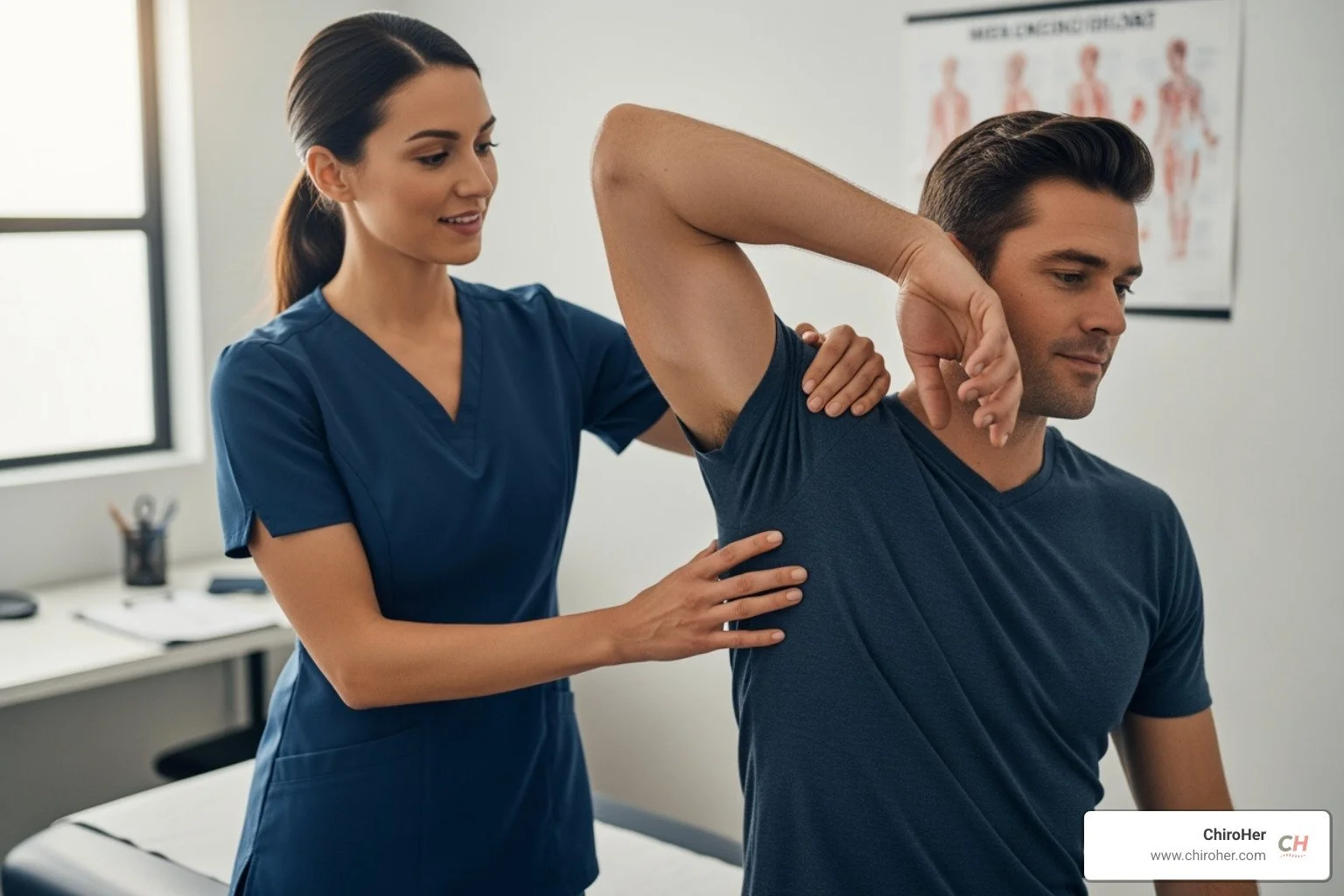The Long Game – A Guide to Chronic Sports Injuries
What Makes Some Injuries Stick Around?
Chronic injuries are persistent pain conditions that last for three months or longer. Unlike acute injuries from a sudden fall, these issues develop gradually from repetitive motions, poor form, or inadequate recovery. What starts as a minor ache can become a persistent problem that affects your work, exercise, and quality of life.
Key Facts About Chronic Injuries:
Duration: Pain lasting over 3 months.
Development: Often from overuse or untreated acute injuries.
Common Types: Tennis elbow, runner's knee, shin splints, and rotator cuff issues.
Impact: Can lead to reduced mobility, weakness, and daily limitations.
Research shows that most musculoskeletal conditions should improve within a week of proper treatment. When they don't, it's time to take action.
Hi! I'm Dr. Michelle Andrews, and I've worked with hundreds of athletes and active individuals dealing with chronic injuries at my Oklahoma City practice, ChiroHer. Through chiropractic care designed for each patient, I help people break the cycle of persistent pain and get back to the activities they love without constantly worrying about re-injury.
What Are Chronic Injuries?
Have you ever had nagging shoulder pain that won't quit? Or knee discomfort that started as a twinge but now bothers you all the time? These are chronic injuries, stubborn conditions that stick around far longer than expected.
Unlike an acute injury that happens in a flash, like rolling an ankle, chronic injuries are the slow-burn variety. They are defined as pain that persists for more than three months. They often develop from overuse and repetitive strain. Think of a tennis player practicing a serve hundreds of times or a runner logging mile after mile.
Many chronic injuries start as acute issues that weren't given proper attention. Pushing through minor wrist pain or hip discomfort can allow an injury to transform into a persistent problem.
Here's what sets acute and chronic injuries apart:
Feature Acute Injuries Chronic Injuries Onset Sudden, specific moment Gradual development over time Cause Single incident like a fall or collision Repetitive motions, overuse, or untreated acute injury Pain Type Sharp, intense, immediate Dull ache that may worsen with activity Healing Time Days to weeks with proper care Months to years without intervention
Chronic injuries don't just affect elite athletes; they impact weekend warriors, busy parents, and anyone who stays active. Studies show that improperly managed injuries have a high probability of becoming long-term conditions. Understanding the difference is the first step toward proper treatment. You can learn more about different Types of Injury and how they're classified.
The good news is that these injuries respond well to the right treatment approach, which we'll explore next.
Understanding Chronic Injuries: Causes, Symptoms, and Risks
Chronic injuries are complex conditions that often result from a combination of factors building up over time. Understanding these causes, symptoms, and risks is key to prevention and effective treatment.
Common Causes and Risk Factors
Several factors can contribute to the development of a chronic injury:
Overuse and Repetitive Motion: Performing the same movement thousands of times can cause micro-tears in tissues faster than the body can repair them.
Poor Technique: Incorrect form during exercise or daily activities creates stress patterns that accumulate, leading to pain.
Improper Equipment: Worn-out running shoes or an un-ergonomic workspace can create imbalances that set you up for problems.
Inadequate Rest and Recovery: Tissues need downtime to repair. Without it, you create a recovery deficit that grows over time.
Previous Injuries: An incompletely rehabilitated injury remains a weak link, vulnerable to re-injury under stress.
Other Factors: Age-related changes in tissue flexibility and structural abnormalities like leg length differences also increase risk. Scientific research on overuse injuries confirms these risk factors. If you're curious about which activities carry the highest risk, we've explored what is the most injury-prone sport.
Recognizing the Symptoms and Common Examples
Chronic injuries often start subtly, making them easy to ignore. Key symptoms include:
Persistent Pain: A dull ache at rest or discomfort that appears during specific activities and lasts for weeks or months.
Swelling and Stiffness: You might notice puffiness or a feeling of being "locked up," especially after rest.
Weakness: The affected area may feel shaky or unable to perform tasks it once could.
Some of the most common examples include:
Tennis Elbow: Outer elbow pain common in those with repetitive forearm use.
Runner's Knee: Pain around the kneecap, affecting runners, cyclists, and hikers.
Shin Splints: Burning pain along the shinbone.
Achilles Tendinitis: Pain and stiffness in the tendon at the back of the ankle.
Rotator Cuff Injuries: Shoulder pain, especially when reaching overhead.
Plantar Fasciitis: Sharp heel pain, often worst in the morning.
Understanding the difference between sprains and strains can help you describe your symptoms. For more information, the National Institute of Health offers resources on sports injury symptoms.
The Long-Term Consequences of Untreated Pain
Ignoring a chronic injury allows it to worsen. What starts as discomfort can lead to:
Increased Pain and Weakness: The condition can become more severe, interfering with sleep and daily life.
Reduced Range of Motion: The body protects the injured area by limiting movement, leading to stiffness.
Compensatory Issues: Your body alters how it moves to avoid pain, which can cause new problems in your back, hips, or other joints.
Psychological Impact: Chronic pain is exhausting and can lead to frustration, anxiety, and a loss of confidence.
More Complex Treatment: Waiting too long can make the condition harder to treat, potentially requiring more invasive interventions. If you have persistent back pain, you might find our articles on back injury helpful.
The key is to recognize the signs early and take action before a small problem becomes a major one.
A Proactive Approach to Healing and Prevention
You don't have to accept chronic injuries as a part of life. Most persistent pain conditions can be managed effectively with a proactive approach. Early intervention and a comprehensive healing plan can make all the difference.
Effective Treatment and Management Strategies
Managing a chronic injury requires looking at the big picture. Key strategies include:
The RICE Method: For acute flare-ups, Rest, Ice, Compression, and Elevation can help manage pain and swelling.
Heat and Cold Therapy: Ice is generally best for new inflammation, while heat can relax chronically tight muscles.
Activity Modification: Adjust how you perform activities to reduce stress on the injured area, rather than stopping altogether.
Lifestyle Support: Manage stress, which can worsen pain, and focus on nutrition and hydration to give your body the fuel it needs to heal.
Therapeutic Exercises: Specific movements designed to correct your imbalances are the foundation of long-term recovery. Our clinic focuses on this approach in our Sport Injury and Rehabilitation programs. Learn more about our specific Therapeutic Exercises.
How Chiropractic Care Can Help Manage Chronic Injuries
Chiropractic care is about understanding how your body works as an integrated system and restoring its function.
We start with a holistic assessment to find the root cause of your pain, which may be different from where you feel it. Gentle, specific spinal and joint adjustments help restore proper mechanics, which can provide relief and set the stage for healing. Our goal is to restore your body's natural biomechanics, helping you move the way you were designed to. This reduces repetitive stress and addresses the source of the problem.
By reducing nerve irritation and improving mobility, chiropractic care helps your body's natural healing processes work more effectively. We are often asked, Can chiropractors treat soft tissue injury? The answer is yes. Our understanding of the musculoskeletal system allows us to treat problems throughout the body. Read more about How Chiropractic Can Help With Sports Injury Recovery and our Manual Therapy techniques.
Prevention and Knowing When to Seek Help
Creating a lifestyle that supports your body's resilience is the best prevention.
Warm-Up and Cool-Down: Always prepare your body for activity and help it transition back to rest.
Gradual Progression: Increase the intensity and duration of your activities slowly to allow your body time to adapt.
Listen to Your Body: Learn the difference between normal soreness and pain that signals a problem.
Cross-Training: Vary your activities to avoid repetitive stress on the same muscle groups.
Seek professional help if pain persists for more than a few days, gets worse, or interferes with your daily life. Signs like numbness, tingling, or significant swelling warrant an evaluation.
At ChiroHer, we serve Oklahoma City and surrounding communities like Yukon, Edmond, and Moore. We focus on you as a whole person, not just a set of symptoms. If you're ready to take a proactive approach to your health, Schedule a consultation with us or Learn about our approach to chiropractic care.
This guide is for informational purposes and is not a substitute for professional medical advice from your healthcare provider.




